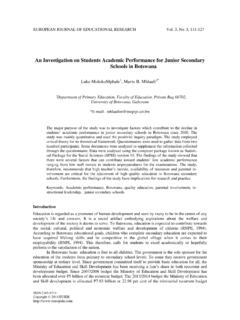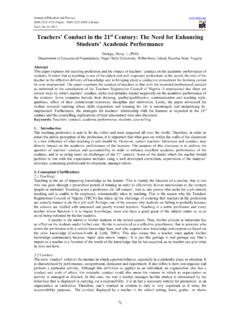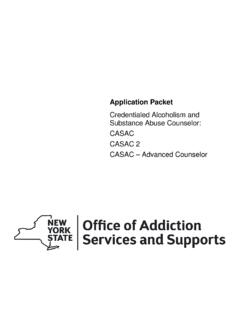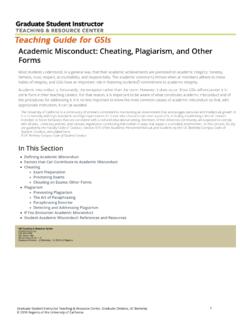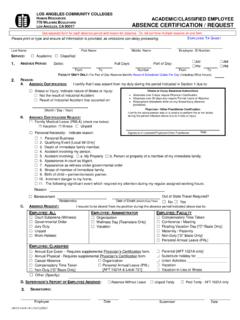Transcription of Survey Questionnaire - Association of American Universities
1 Report on the AAU Climate Survey on Sexual Assault and Sexual misconduct Survey Questionnaire Campus Climate Survey on Sexual Assault and Sexual misconduct Table of Contents Overview ..1 Survey Flow and Logic1 ..1 Informed Consent ..2 SECTION A BACKGROUND ..3 SECTION B PERCEPTIONS OF RISK ..7 SECTION C - RESOURCES ..8 SECTION D - HARASSMENT .. 10 SECTION E STALKING .. 16 SECTION F IPV/DV .. 22 SECTION G SV SCREENER .. 26 SECTION H SEXUAL misconduct PREVENTION TRAINING .. 31 SECTION I PERCEPTIONS OF RESPONSES TO REPORTING.
2 32 SECTION J BYSTANDER BEHAVIOR .. 34 SECTION K DEBRIEFING ITEM .. 36 ATTACHMENT 1 SECTION G1: IMMEDIATE FOLLOWUPS .. 37 ATTACHMENT 2 SECTIONS GA & GC: SUMMARY DETAILED INCIDENT FORMS .. 40 Section GA Detailed Incident Form (DIF) for G1-G5 .. 40 Section GC Detailed Incident Form (DIF) for G6-G9 .. 49 1 Section Headings, navigation boxes and skip instructions are for navigation purposes only and are not seen by Survey respondents. For an example of a screen shot for a question, see accompanying document on summarizing the Questionnaire development.
3 1 Overview This first section provides a brief overview of the logic and flow of the instrument. The remaining sections provide the Survey , starting with the informed consent statement. The vertical lines on the Survey documentation indicate what appeared on each screen. For an example of the template used for each screen, see the document summarizing the Questionnaire development process. Survey Flow and Logic The Survey has a core set of 63 questions that are asked of every respondent. Additional questions are administered if respondents report being victimized.
4 For Harassment, Stalking and Intimate Partner Violence (Question items D, E and F), approximately 7 follow-up questions are asked for each type of misconduct . These follow-up questions ask for information across all reported incidents for each form of victimization. For example, if someone was a victim of Intimate Partner Violence by two different partners, the follow-up questions ask for information across both partners. There is more complicated logic for the items covering sexual assault (G1-G5), coercion (G6, G7) and lack of affirmative consent (G8, G9).
5 Across these items, there are two types of follow-up questions. First, there are follow-ups to each yes response to questions G1 G9 (Attachment 1). The purpose of these follow-ups is to count and date each of the incidents that occurred. This is done by following each yes response to an individual screen item (G1 G9) with questions that ask for the number of times (Attachment 1: G[X]a2) and the school year in which the incident occurred (Attachment 1: G[X]b G[X]c). To finalize the count, there are additional follow-ups that ask if the incident is part of another incident that was already reported.
6 If it had already been reported, the respondent is asked to indicate which other incident was involved (Attachment 1: G[X]d, G[X]e). After G1 G9 were completed, a second type of follow up was used to collect details on the victimization that was reported (Attachment 2). These follow-ups were divided into two groups. One group is for the sexual assault items (G1-G5). If a respondent reported yes to at least one of G1 G5, a series of approximately 18 items were administered to collect the details (Attachment 2; Items GA).
7 These follow-ups are administered separately for G1-G2 (completed and attempted penetration by physical force), G3 (sexual touching using physical force), G4 (penetration when incapacitated) and G5 (sexual touching when incapacitated). For example, if a respondent reports a penetration by force (G1) and sexual touching by force (G3), these items were administered twice, once for each type. As with the other types of victimization, these follow-up questions ask for a summary across all incidents of each type. For example if the individual was a victim of sexual touching using physical force (G3) on two occasions, the items will ask for a summary across both occasions.
8 Up to 2 forms were administered for those individuals that reported 2 or more types of assaults. If more than two types of assaults were reported, then the top two were selected using the following order: 1) G1-G2 (completed or attempted penetration with force), 2) G4 (penetration when incapacitated), 3) G3 (sexual touching by force), 4) G5 (sexual touching by incapacitation). The second group of follow-ups were administered for reports of coercion (G6, G7) and lack of affirmative consent (G8, G9; Attachment 2: Section GC).
9 If a respondent reports both coercion and lack of affirmative consent, two forms were administered, one for each type. 2 X goes from 1 to 9. For example, G[1]a is the follow-up to question G1; G[2]a is the follow-up to question G2, etc. 2 Informed Consent [UNIVERSITY] is asking all students to answer a climate Survey on sexual assault and sexual misconduct . The Survey is sponsored by [UNIVERSITY] in collaboration with the Association of American Universities (AAU).
10 The results will be used to guide policies to encourage a healthy, safe and nondiscriminatory environment at [UNIVERSITY]. This Survey includes sections that ask about your knowledge and beliefs about social situations, perceptions related to sexual misconduct at [UNIVERSITY] and your knowledge of resources available at [UNIVERSITY]. TRIGGER WARNING: This Survey also asks about your personal experience with sexual misconduct , such as harassment, sexual assault and other forms of violence. Some of the language used in this Survey is explicit and some people may find it uncomfortable, but it is important that we ask the questions in this way so that you are clear what we mean.



